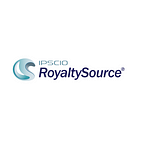A Look at Using Composite Royalty Rate Data
Average Royalty Rate by Industry
Every year we offer composite royalty rate benchmark information in a summary report for 15 different industries. Detailed in the Figure is a graphic presentation of the industry average royalty rates sourced from public documents and included in the summary.
The benchmark measures include average, median, maximum, minimum and the interquartile range for a total of 9,971 agreements included in the 2021 Summary. It is important to understand that in each year, the number of agreements used to prepare the graph is equal to the total number added to the RoyaltySource database up to that year. It is evident that industry average royalty rates do not change much year-to-year, but there are significant differences between industries, indicating that a composite benchmark supplies good insight.
The 2021 Royalty Rate Industry Summary is now available for purchase. Simply visit IPSCIO.com and click on “Shop Pre-built Reports” or Selfserve.Royaltysource.com and click on “Industry Study Reports.”
Why Look at Industry Composites
Touching on elements that influence the use of industry composite data is helpful in bringing greater transparency to selecting a royalty rate before or after completing a transaction or finalizing an opinion. Our list is not intended to be all-inclusive, but it is intended to jump-start the due diligence process needed to develop or test a conclusion.
Composite data offers:
- A view of the overall market and industry sector trends over time.
- Observations averaged together form a general statistic representative of the economic impact of license clauses and royalty payment structures. For example, the scope of a license includes clauses such as:
• License Grant
• Exclusivity
• Territorial Restrictions
• Duration, Renewals, Termination
• Ownership Rights to New Developed Technology
• Monitoring and Quality Control
These license clauses influence royalty payments, yet their impact may be unknown or difficult to measure. The mix of royalty payment structures also influences the magnitude of a royalty payment. The royalty payment can be split between various payment methods such as:
• Upfront fees, milestone payments, stock issuances
• Royalty — lump sum, running royalty, defined amounts, minimums, etc.
• Required purchases of supporting services or materials
• Sharing of costs, etc.
A composite look considers these influences. - Direction and/or a check against a detailed analysis. For example, how do you know if your conclusion makes sense? If your conclusion appears to be “out-of-bounds” compared to a composite, more due diligence is needed and/or a detailed explanation of why your conclusion is outside the bounds. This check will likely cultivate a better report for audit or court.
- Supplying a useful benchmark against which to measure Intellectual Property portfolio performance to help answer questions such as (1) are we underpricing or overpricing our technology and (2) what is the licensing activity in our industry segment?
Applying Industry Composites in Practice
Just knowing the boundaries of market-based royalty rates and deal terms for your target Intangible Property, prior to a more in-depth search and analysis, gives support for various purposes. These include:
- Transactions — Licensing and purchase/sale of IP transactions. Licensing executives can quickly control compensation expectations by establishing a playing field, or a range of royalty rates/values, prior to and during negotiation.
- Litigation — Infringement damage litigation has become so expensive that the parties to the matter can quickly assess possible damage awards before moving forward to make sure the choice to litigate or settle is economically feasible.
- Financial Reporting — Experts performing purchase price allocations under IFRS 3/ FASB ASC 805 need to select a royalty rate when using the relief-from-royalty approach to Intangible Property valuation. Selection of a comparable royalty rate begins with assembling supporting documentation for the selection of a royalty rate. A broad view of royalty rate benchmarks and a follow-on targeted search to make a judgement will strengthen the analysis and supporting documentation under audit review.
- Taxation — Transfer Pricing experts can quickly test intercompany agreements by using benchmark royalty rate data and the interquartile range.
Other Industry Reports
We have also developed a series of “Industry Reports” that supply a more in-depth analysis of the technology transactions comprising the 15 industries. For example, a report on the “Automotive Industry” is available and the benchmark data includes sub-groups of powertrain, efficiency/emission control, electrical/electronic and safety. The series also includes a unique “Food & Beverage Brand” report looking at royalty rates from in- and out-licensing under three different marketing arrangements — core product, co-brand or brand extension. It also looks at character and celebrity licenses.
Copyright© AUS Consultants, Inc.
